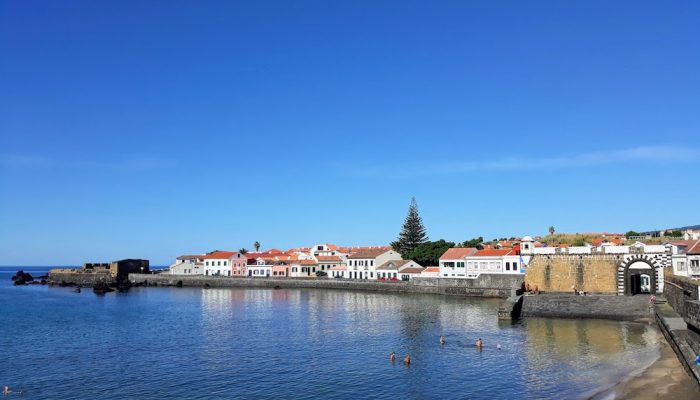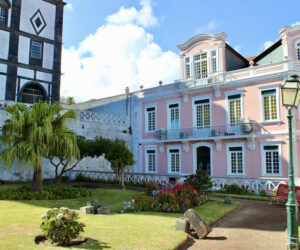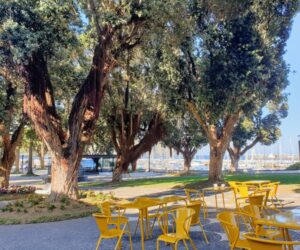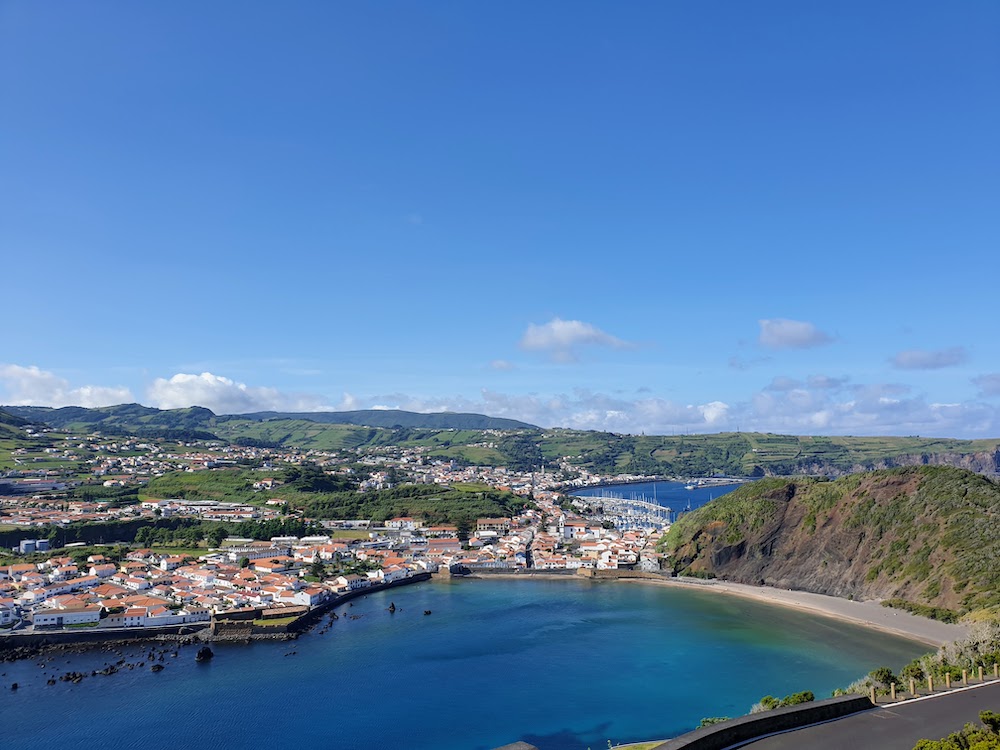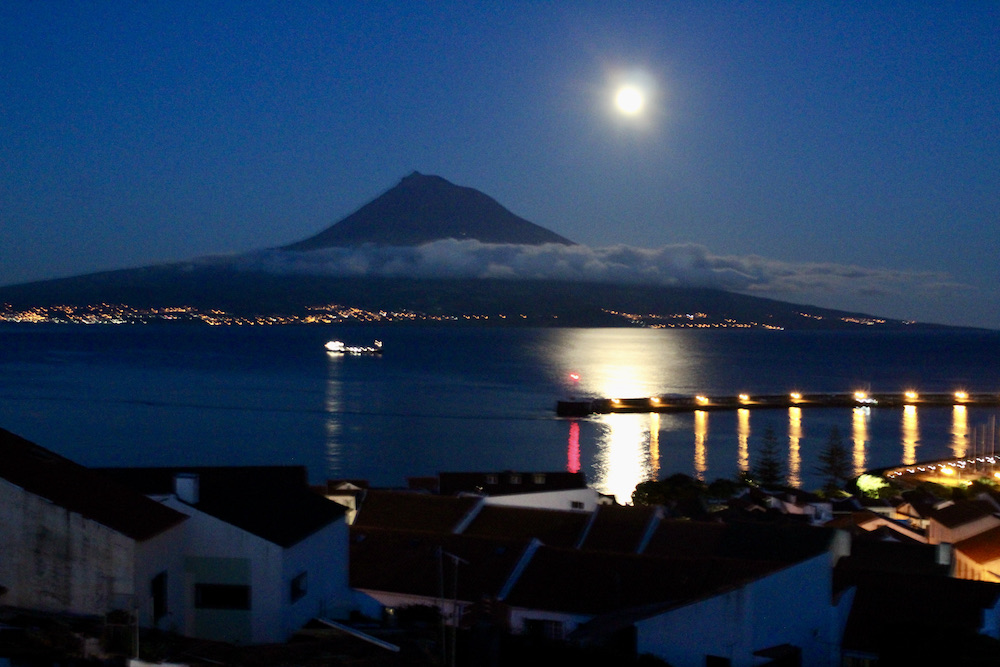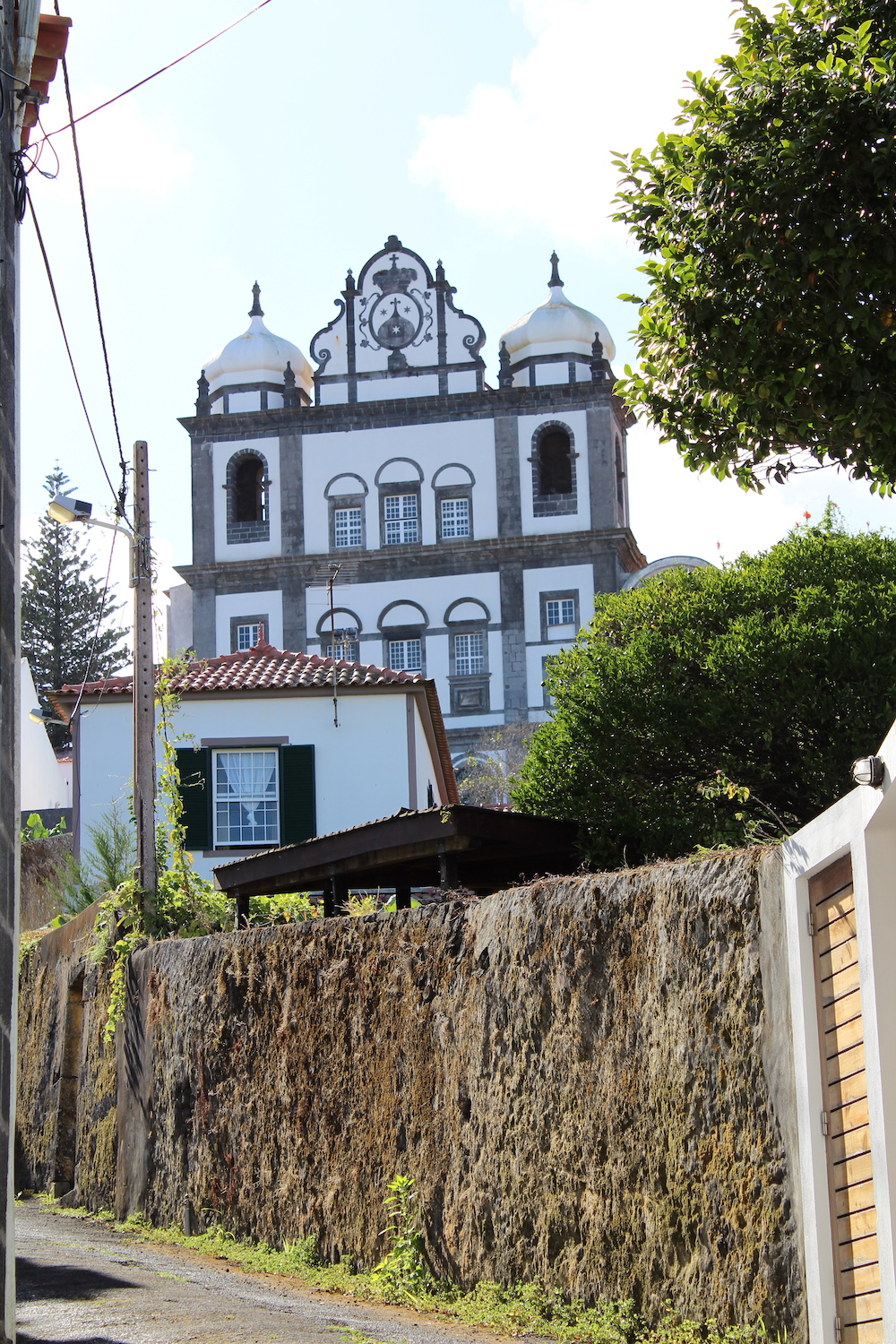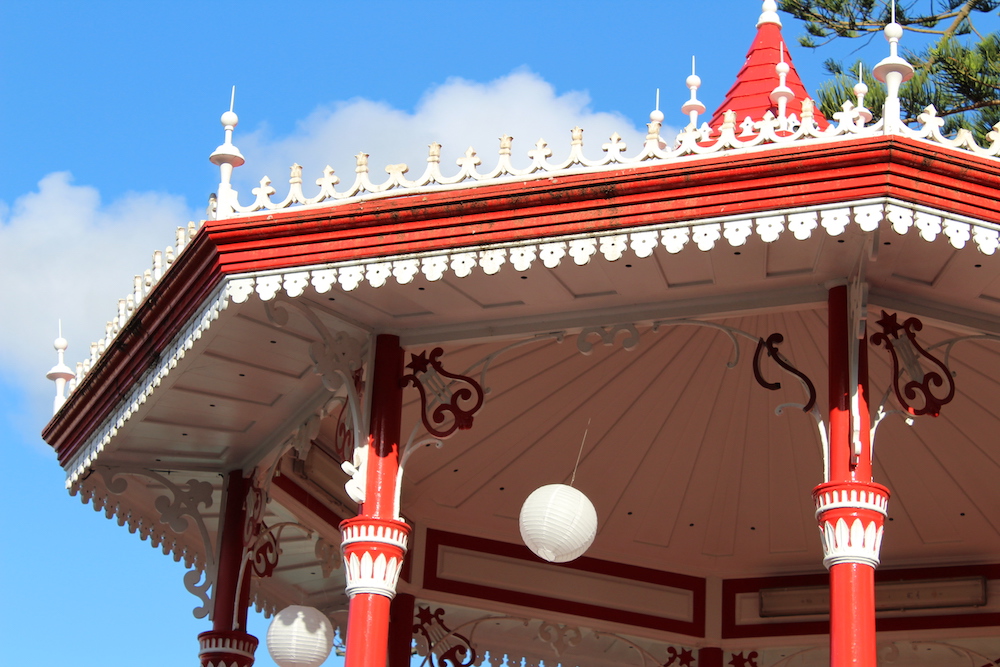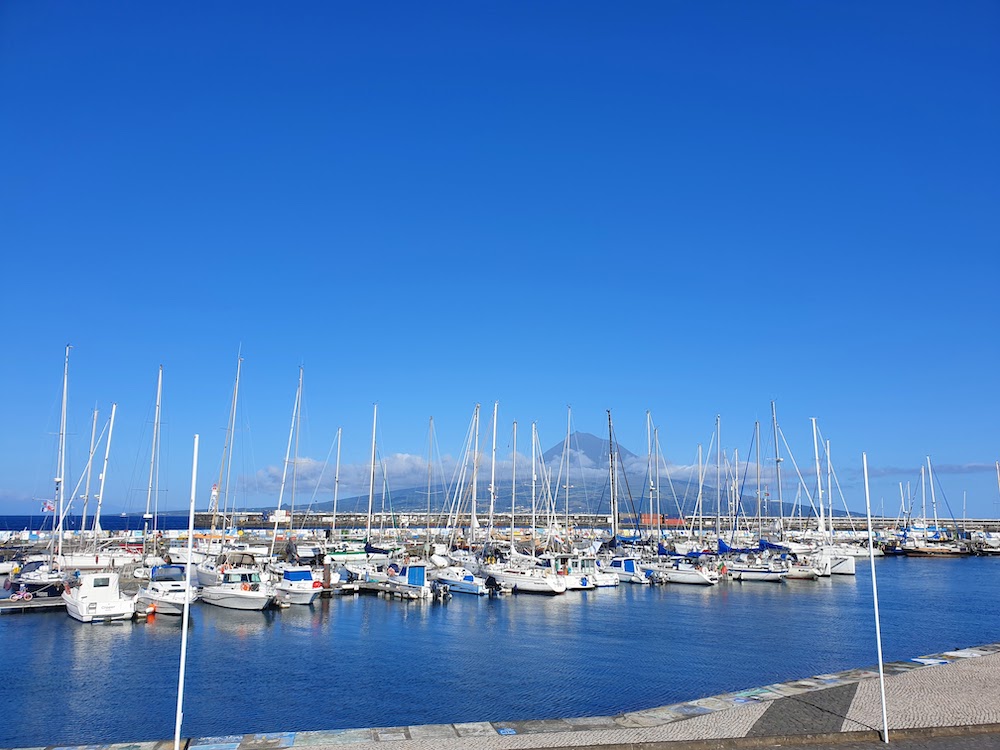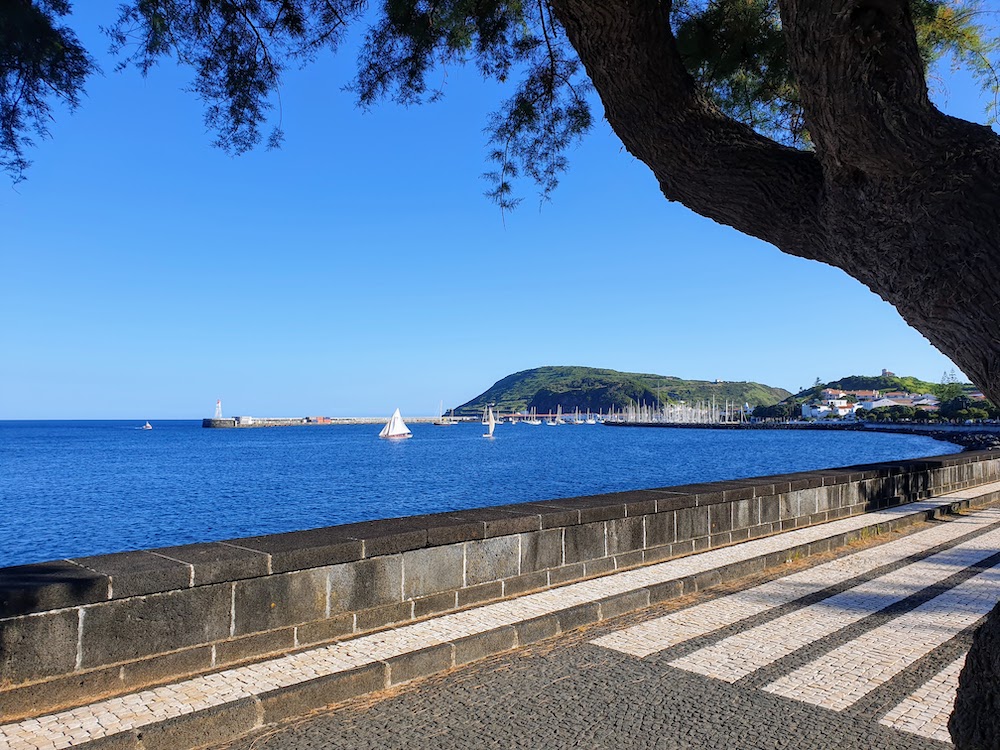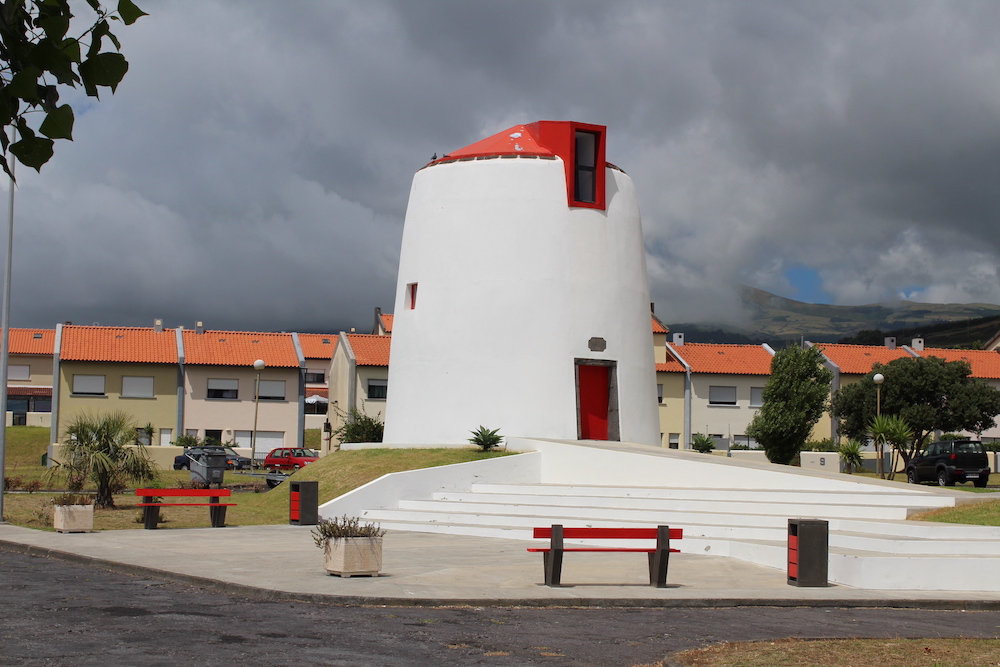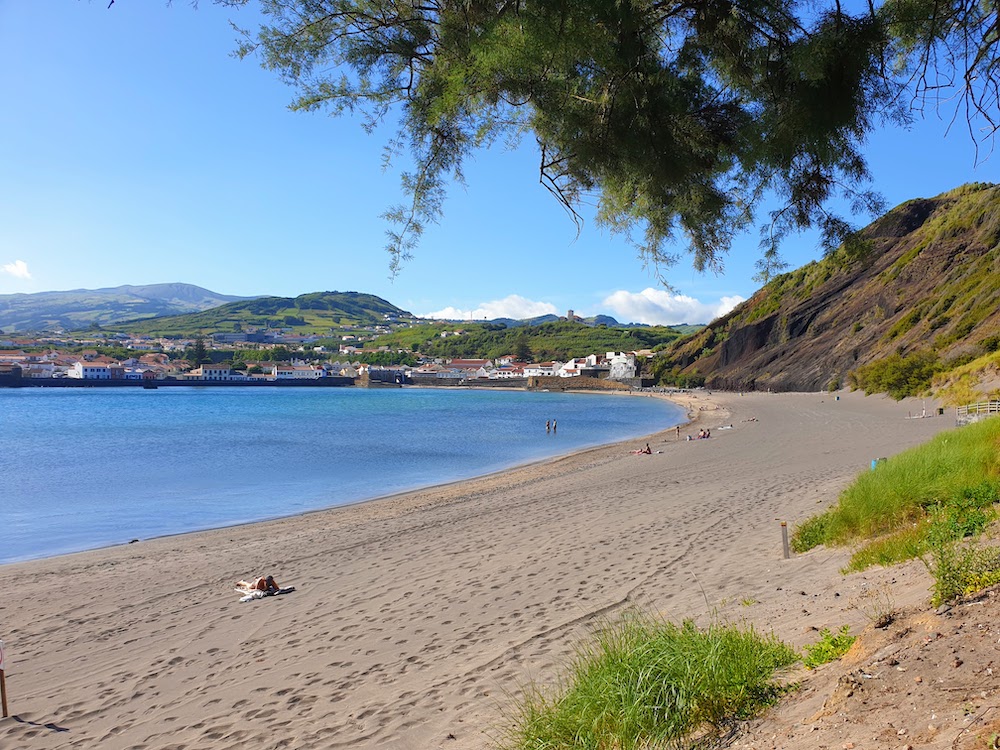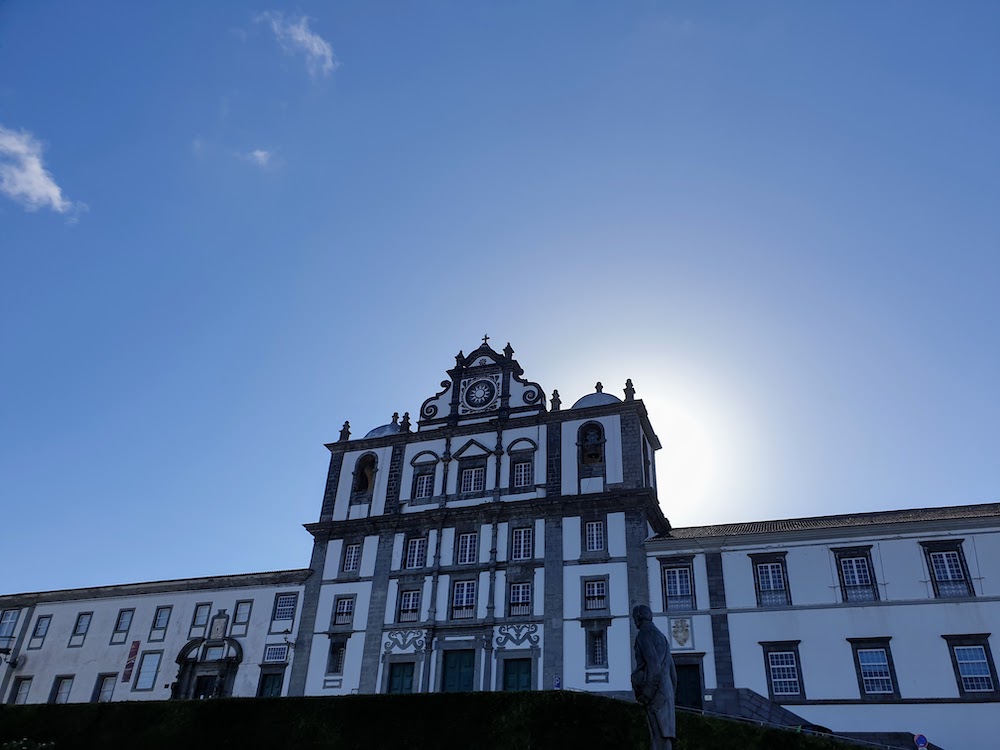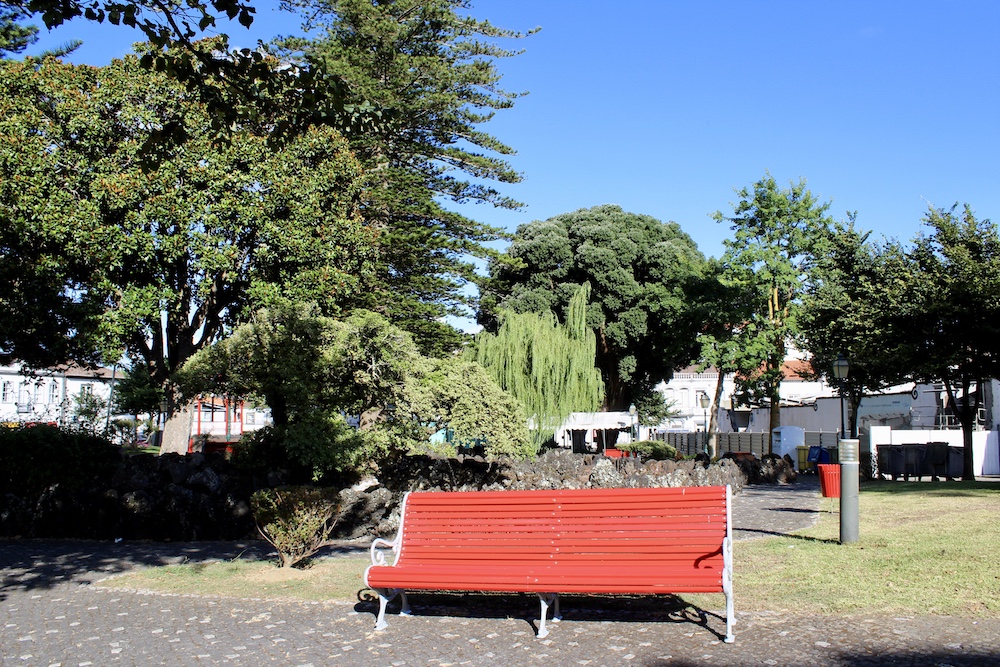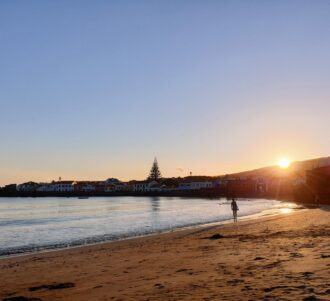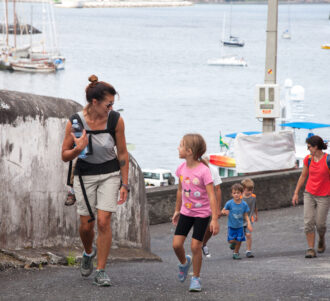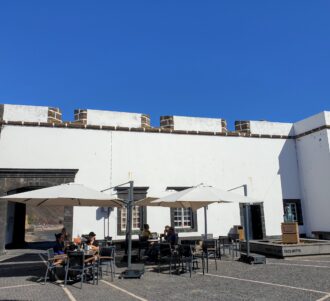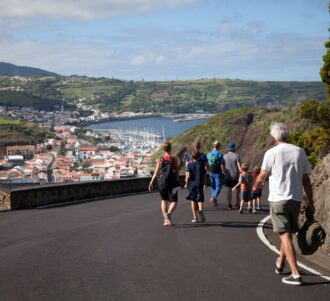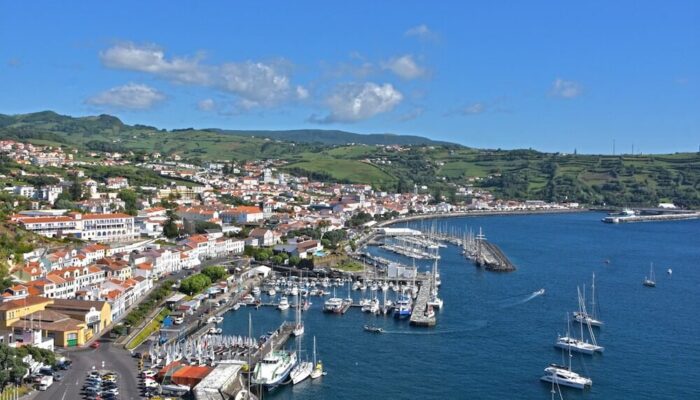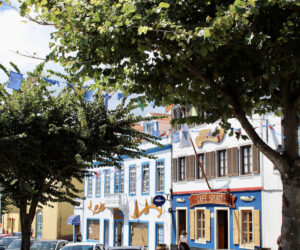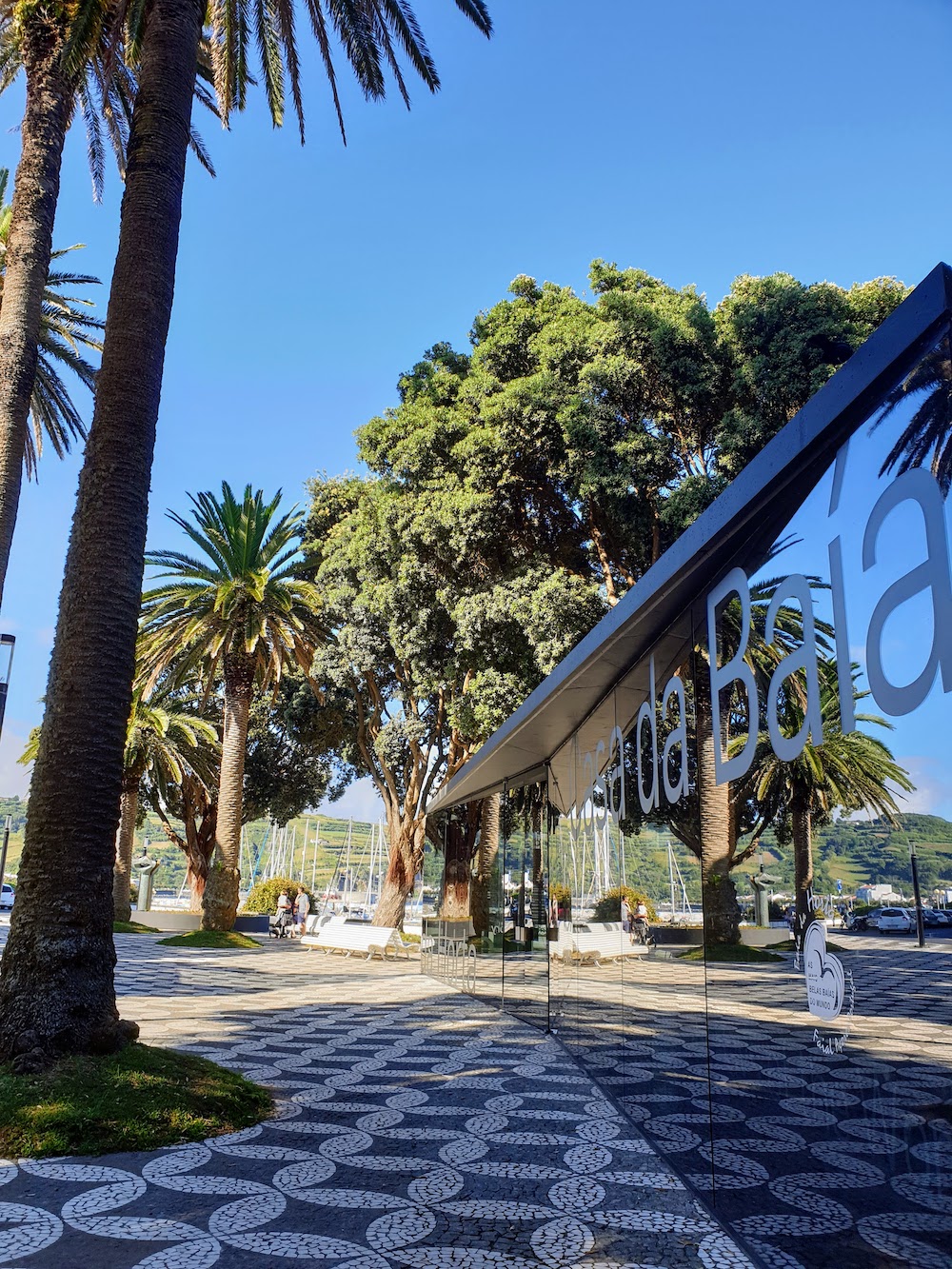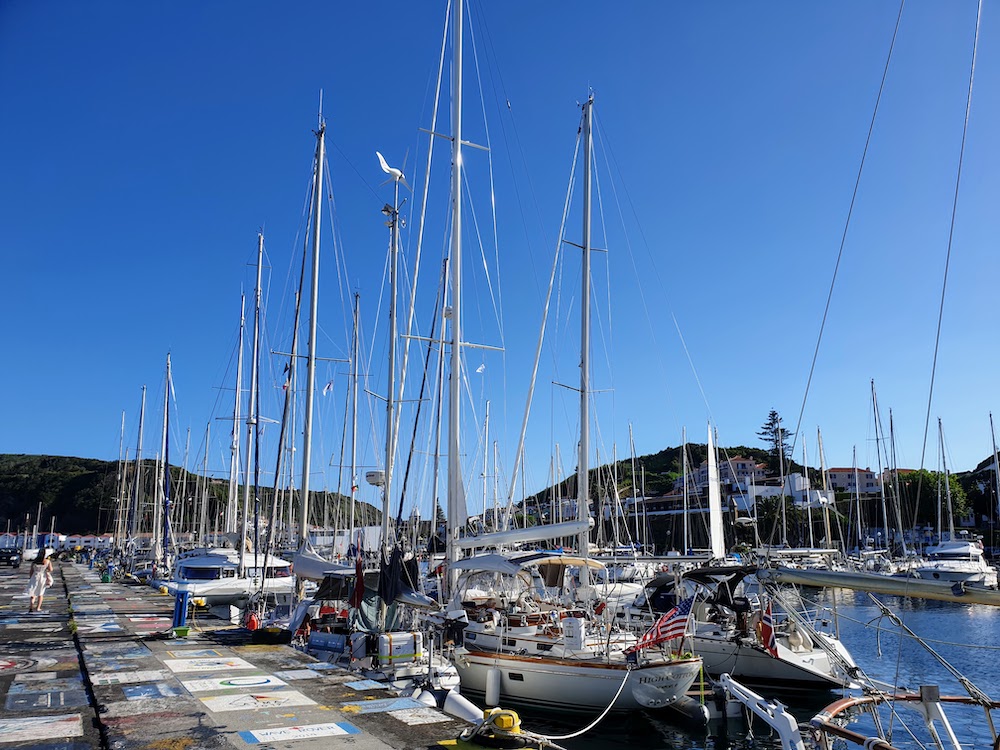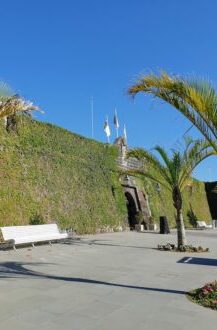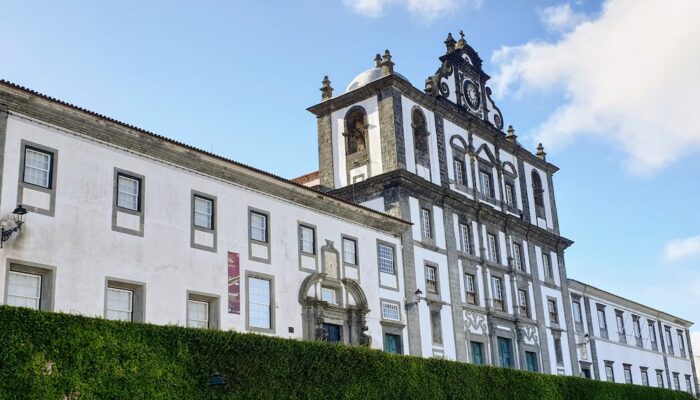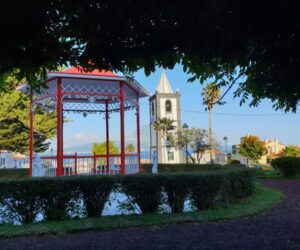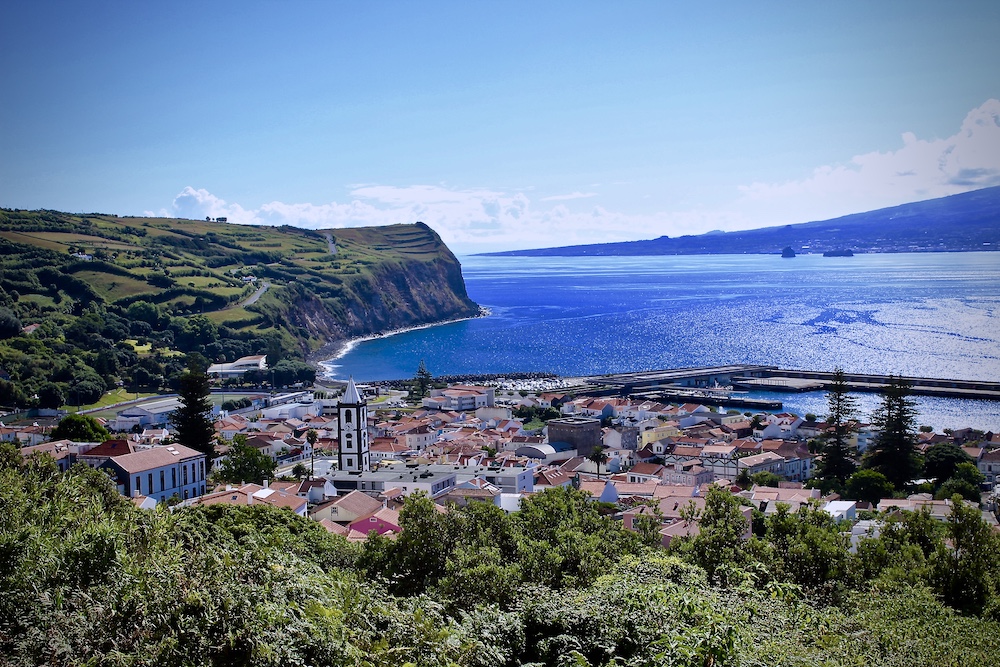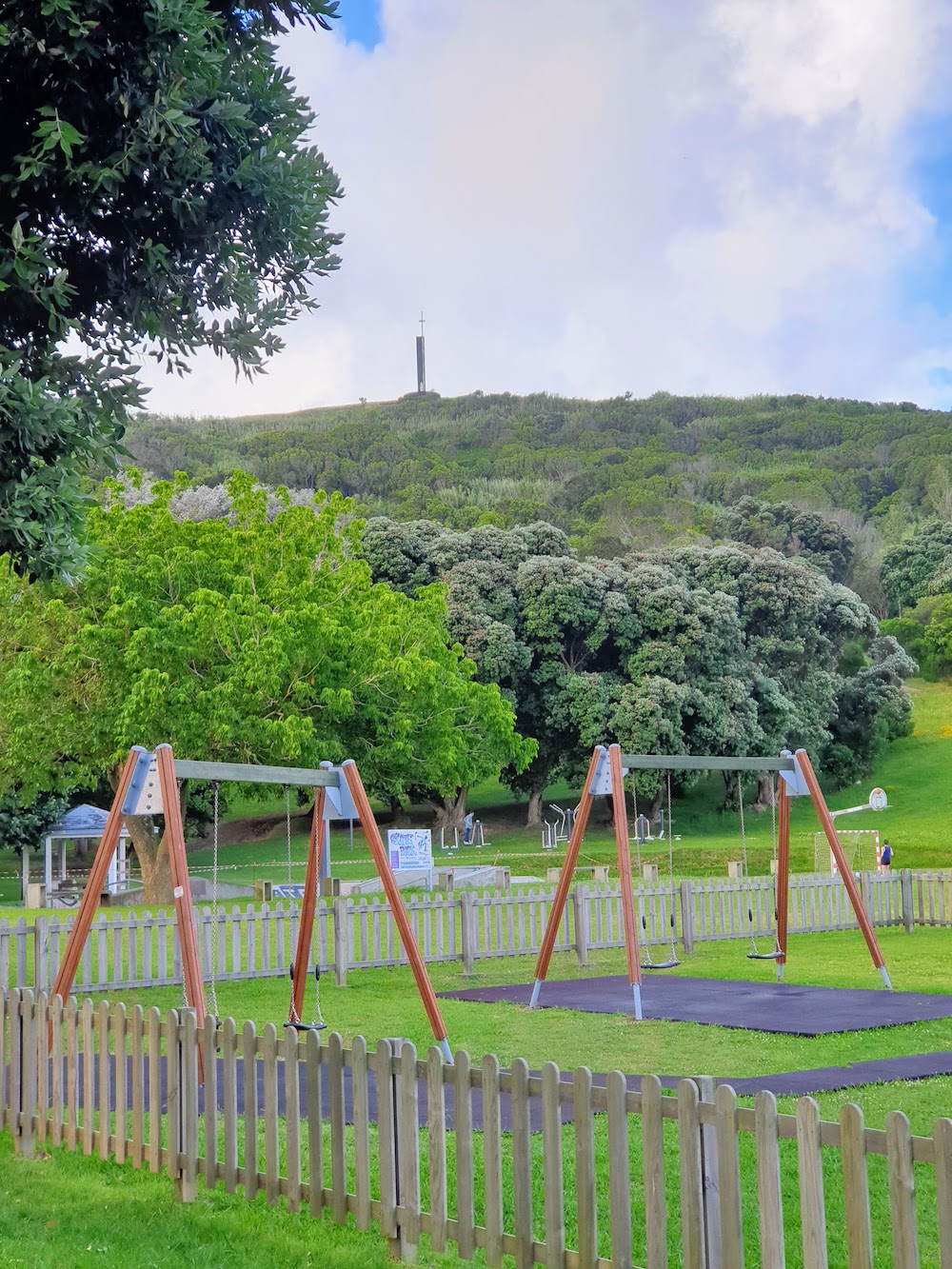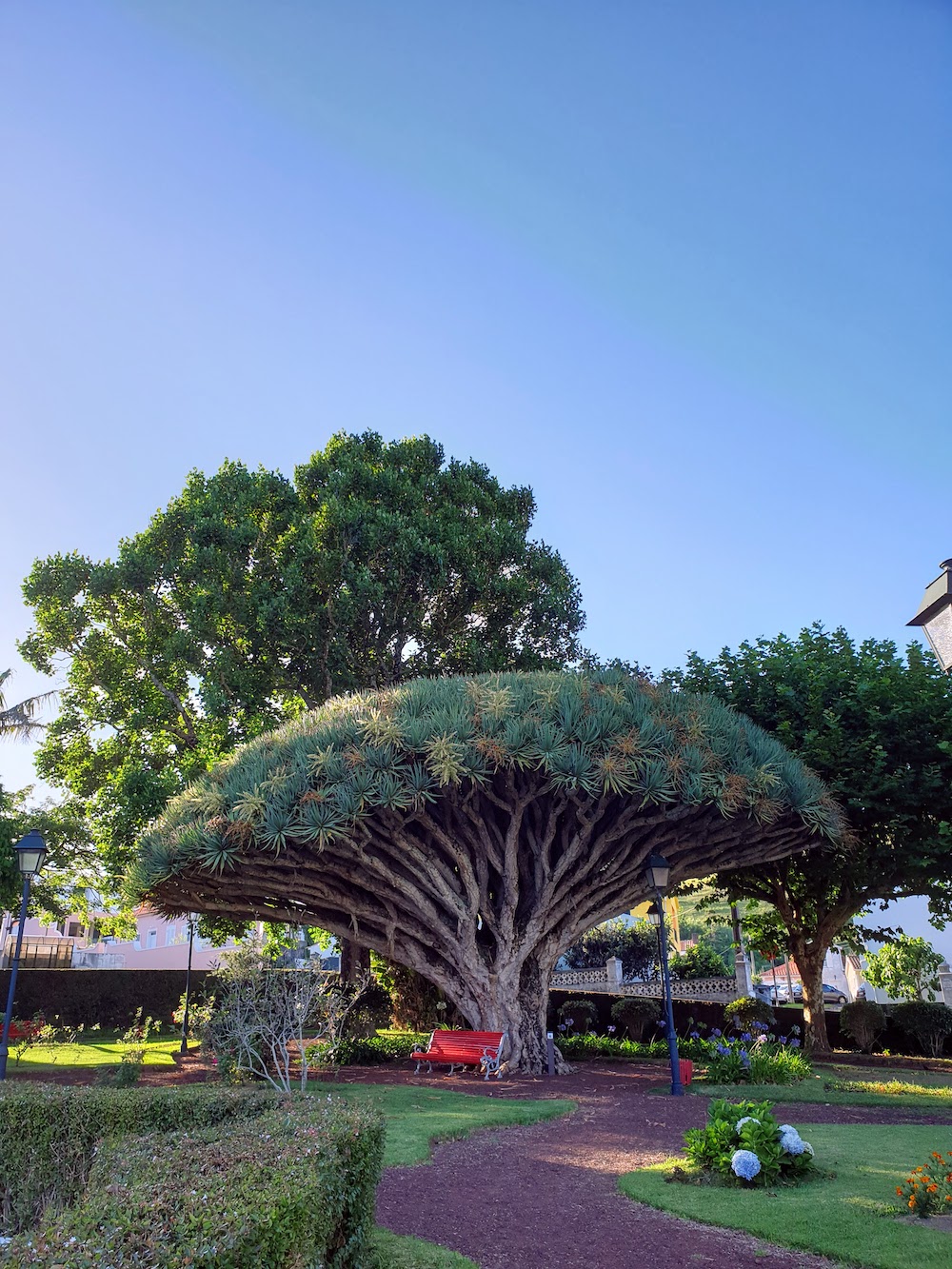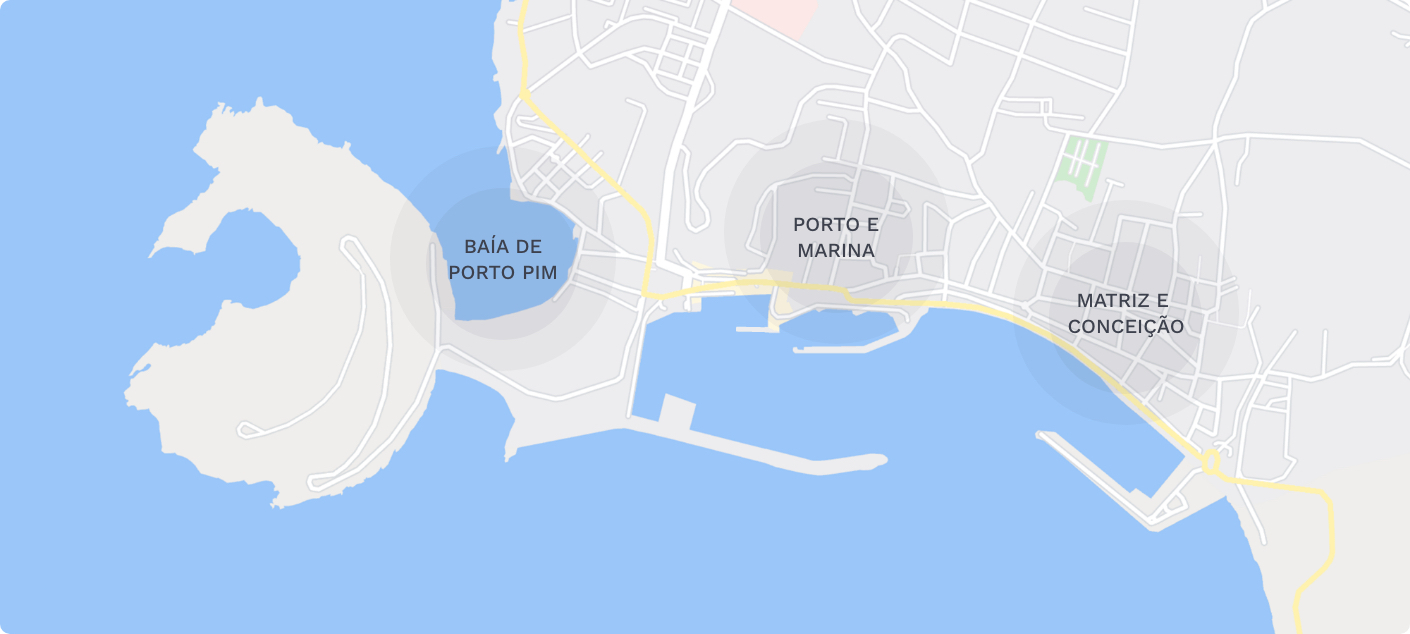
Known as the Sea-City, Horta has a great nautical tradition and centuries of history linked to navigation.
Located in a sheltered bay with an extraordinary view of Pico and São Jorge, the life of the city revolves largely around its relationship with the sea, the harbor and the Marina, one of the busiest in the world.
The best way to discover and feel the city is to walk, explore the streets and places of natural and cultural interest.
Here you will always find a hospitable and pleasant place to stroll, shop, enjoy the local cuisine and have fun.
Day or night, at any season, Horta is a safe and welcoming city: a haven for all who visit the island.
Discover the City of Horta
Porto Pim Bay
Recognized by its geographical setting, which includes Monte Queimado and Monte da Guia which frame the bay area, the Bay of Porto Pim is a place of natural beauty and of great historical and cultural interest.
There are countless reasons to love this place. You can stroll around, see some of the forts and defensive walls that once protected the city from pirates and buccaneers, visit the Fábrica da Baleia (Whaling Station) and the Casa dos Dabney (Dabney’s House), or hike the “Entre Montes” trail that runs through the Monte da Guia, a classified protected area, enjoy a sunny day on the picturesque Porto Pim beach or go snorkeling in the calm waters of the bay, where you can observe a wide variety of fish species and even see the remains of the 1892 Main shipwreck. If you don’t want to hike up the trail, you can always get to the top by car, scooter or bicycle. The views of the bay and the city are magnificent to say nothing of the sea flooded craters of the Caldeirinhas Natural Reserve.
Discover the main points of interest in this area:
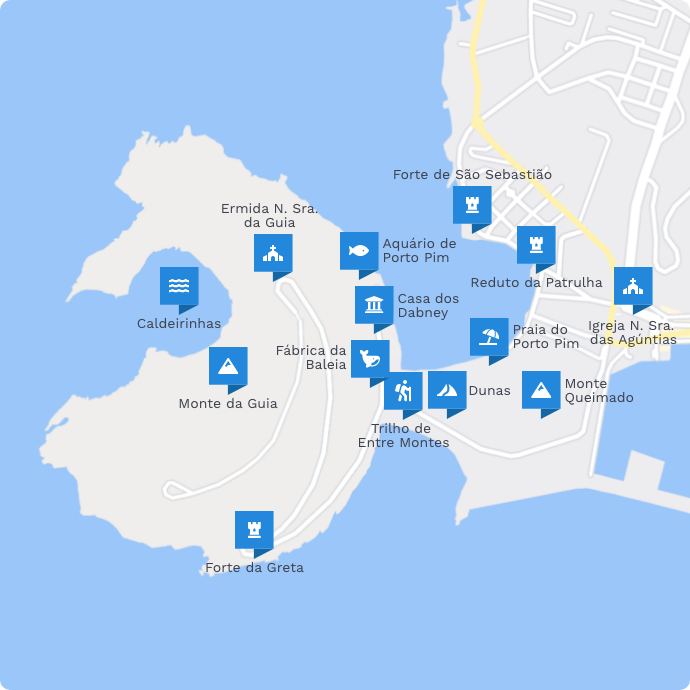
Forte de São Sebastião
Built in the 17th century, it is part of the fortification complex in Porto Pim Bay. It played a major role in controlling the entrance to the Bay and the traffic to the south of the island. It was rehabilitated in 1817 and served as a prison until the end of World War II. It is currently under restoration after the damages caused by Hurricane Lourenzo.
Reduto da Patrulha
Also known as the Sea-Gate of Porto Pim, it was built in the 17th century to protect the access to Porto Pim, Horta’s former harbor. It was part of the group of fortifications that protected the ancient harbor.
Porto Pim Beach
This beautiful beach, located in one of the city’s bays, is one of the most tranquil and inviting places for a morning or afternoon of rest and sea-bathing. The stunning landscape and the tepid and calm waters of the bay make it ideal for a spontaneous swim or for activities such as snorkeling, kayaking or stand-up paddle boarding.
Monte Queimado
Monte Queimado (burnt mountain), is so named for the black color of its rocks, looms imposingly behind Porto Pim beach. It is part of the special protected area of Monte da Guia and its highest point may be accessed through the “Entre Montes” trail. At the top you will find the ruins of an old farm and can enjoy beautiful panoramic views over the city of Horta and the bay of Porto Pim.
Dunes
The gray dunes with shingle vegetation which can only be found here and in Praia da Vitoria on the island of Terceira are sensitive habitats that support several endemics species has been classified by the Natura 2000 Network.
Monte da Guia
Monte da Guia is a classified protected area and has some of the most spectacular lookouts on the island. In addition to its geological formation it also has an abundant presence of endemic fauna and flora. You can reach the top of Monte da Guia by car, scooter or bicycle, or you can hike along the beautiful Entre Montes trail. On the top you have an excellent panoramic perspective of Porto Pim bay, the city of Horta and Caldeirinhas.
Fábrica da Baleia (Whaling Station)
This museum tells the story of whaling on Faial and is one of the best examples of the extinct Azorean whaling industry, essential for the historical, economic and social understanding of this activity.
©Siaram
Dabney's House
The museum chronicles the history and the life of the Dabneys, an influential American family living in Faial during the 19th century, a period of great economic prosperity connected with wine, orange, and whale oil trade. The Dabneys left a cultural, historical and scientific heritage that is still visible and recognized on the island today.
Porto Pim Aquarium (temporarily closed)
This aquarium displays some of the most common coastal species in the archipelago and offers information about the deep sea of the contiguous continental platform of the archipelago. The aquarium is deeply committed to promoting awareness about the biodiversity of the Azorean sea.
The aquarium is temporarily closed.
Ermida Nossa Senhora da Guia
This chapel is located on top of Monte da Guia and has a magnificent view over the bay. Every August a nautical procession is held in honor of Nossa Senhora da Guia, patron saint of fishermen. A mass is celebrated at the chapel and the image of Our Lady is transported by boat followed by many other boats, on a route around the Mount. The procession ends at the church of Angústias.
Forte da Greta
Built on the cliff of Monte da Guia, it stands triumphantly over Horta’s bay. The fort was part of the defensive system of the island against the attacks of pirates and buccaneers, once frequent in this region of the Atlantic Ocean.
In the 1950’s two elevated platforms were erected on this same place for maritime surveillance radars, which have since been deactivated.
Angústias Church
This church was built on the site of the Santa Cruz chapel founded by the first settlor of the island, Joss van Hurtere and his wife Beatriz de Macedo, under the invocation of the Holy Cross.
After that original chapel, a new temple was built and inaugurated in 1675. The construction of the current version began in 1800 and has the coat of arms of the first noble families settled in Faial on the ceiling above the main altar.
Thematic Routes
©Siaram
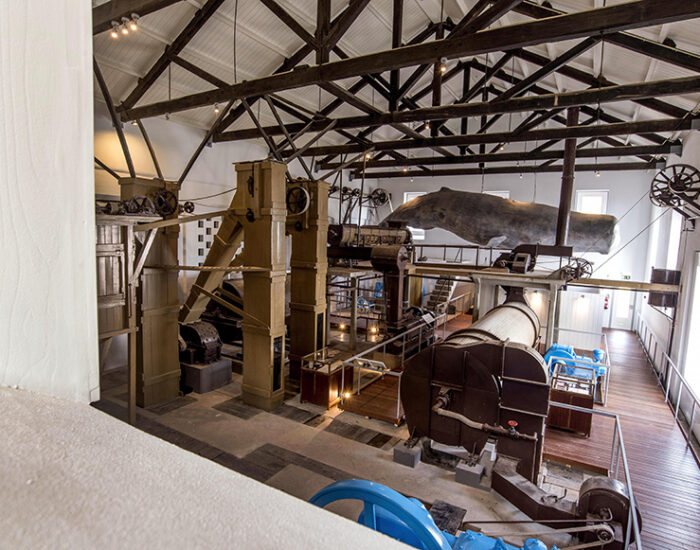
Whaling
This dangerous and arduous activity affected the Azorean people’s relationship with the sea and how it was subsequently transformed into a new way of looking at the ocean and the creatures that inhabit it.
©Francisco Ribeiro/Meia Eira
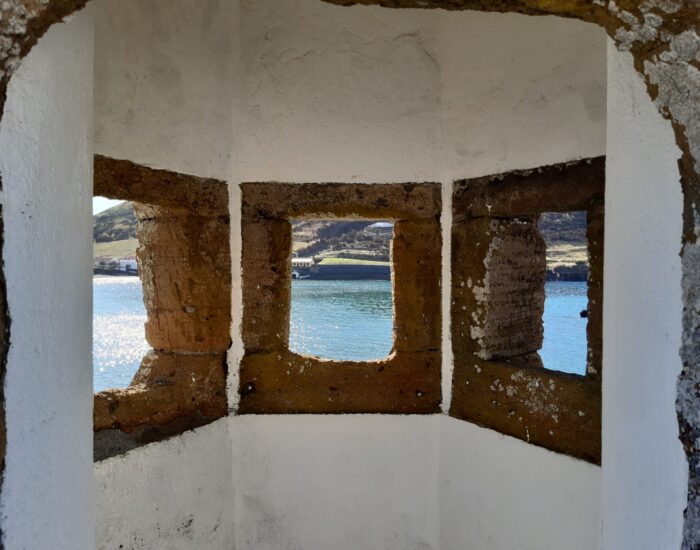
Pirates and Buccaneers
In Porto Pim Bay there are fortifications as well as the remnants of the extensive wall that once surrounded the entire coastline of the city of Horta. These defensive constructions, built during the 16th 17th and 18th centuries, were an important protection against frequent pirate and buccaneer attacks.

Harbor and Marina
Horta’s harbor and marina are one of the liveliest in the city, marked by the strong presence of nautical culture. Here you can visit the beautiful marina, decorated with thousands of colorful paintings made by the crews of the more than 1200 boats that dock here every year, taste the famous gin and tonic at Peter Café Sport, the epicenters of the island’s cosmopolitan culture, have a coffee or an ice cream at the pleasant Largo do Infante, or take a walk along the main waterfront avenue, with a magnificent view of the harbor and the neighboring islands of Pico and São Jorge.
Go up Rua Cônsul Dabney and see the several buildings that were erected during the era of transatlantic telecommunications. These submarine cables maintained the presence of several foreign communities in Horta (mainly German, English and American) for more than 7 decades, from the end of the 19th century until the late 60s.
In this area you also find the São Francisco Church (currently closed to the public) and the Manuel de Arriaga House, a museum space created in the place where the first President of the Portuguese Republic was born and raised.
Discover the main points of interest in this area:
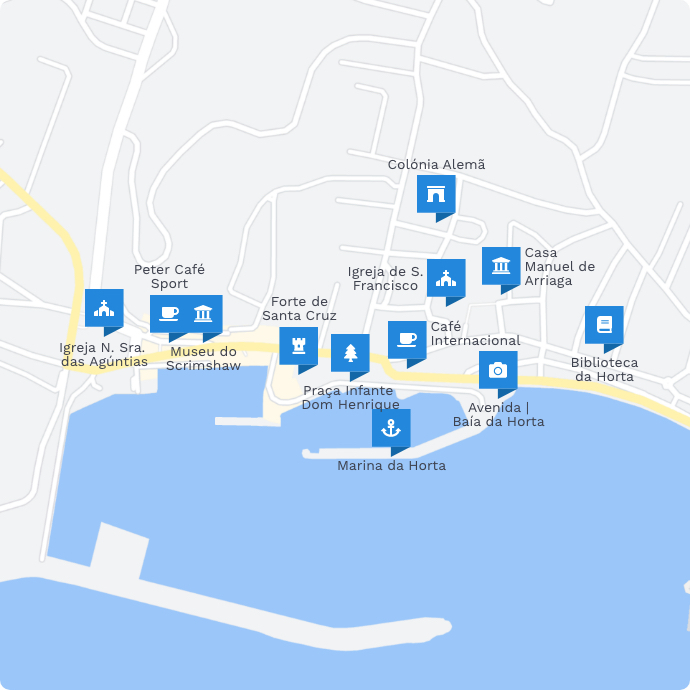
©Peter Café Sport
Peter Café Sport
Peter’s Café and restaurant has been around for more than 100 years and is an international reference in the world of yachting. Since it opened in 1918, this place has welcomed the adventurers who cross the North Atlantic with open arms and remains a meeting point for sailors, travelers and the local population.
Scrimshaw Museum
The museum is located on the second floor of Peter’s café and houses an extraordinary collection of scrimshaw pieces. This is an ancient art form cultivated by whalers, who carved and painted on the ivory of sperm whale teeth.
Horta's Marina
In addition to being one of the he busiest in the world, Horta Marina is also one of the most colorful, with its walls and pontoons completely covered with paintings made by the sailors that visit the Island. Those who pass through Horta Marina find an open-air art gallery, with paintings that take us back to long trips around the world, to legends of sailors and storms, to the delight of finding land and of being welcomed in a safe haven.
Forte de Santa Cruz
Built and restored between the 15th and 17th centuries, it occupies a strategic position next to the Santa Cruz pier. The fort constituted the main fortification of the island and had an important defensive function to the town/city and the merchant ships that docked at the bay.
Currently, the fort operates as a Pousada.
Praça Infante Dom Henrique
This square and garden is right in the center of the city and has a beautiful view of Pico Island and Horta’s Marina. Under the cool shade of the New Zealand Christmas trees and Canary palm trees, there are plenty of resting spaces, café terraces and a Tourist Information Office – Casa da Baía.
Casa da Baía - Tourist Information Office
Established under the motto “Horta – One of the Most Beautiful Bays in the World”, Casa da Baía is not only a tourist information office but also a place to visit. Here you can discover the island’s products, learn about the history of the city and Horta’s relationship with the sea and the world.
Café Internacional
This historic cafe opened in 1926 and for several decades, was a meeting point for Faial’s elites. Marked by the Art Deco style and decorated with period prints, the Café welcomed the most illustrious visitors to the island, the officers of the various ships at berth and the multicultural community in charge of the submarine cables operations.
Avenue - Horta's Bay
Horta’s waterfront avenue is the ideal place to go for a walk, day or night. The hills surrounding the bay, the sophistication of city life, the island of Pico, which rises with an imposing presence just across the channel and the island of São Jorge closing the horizon, make an absolutely breathtaking backdrop!
German Colony
The group of buildings in the German Residential Zone, commonly called German Colony, housed the personnel of the submarine cable company DAT- Deutsche Atlantische Telegraphengesellschaft. The Mess Hall stands out for its clock tower, where we find an original mechanism from the Ed. Korfhage & Söhne factory, and the Winter Garden, where there is a significant panel of stained glass windows of historical, cultural, and artistic interest. In this work by the Schneiders & Schmolz company, of Cologne, dated 1912, one can appreciate the heraldry of the various states of the German Empire (William II).
Visits to this Winter Garden are possible between 9:00 am and 5:30 pm, upon request of the key.
Currently, this complex hosts several services of the Azorean Government.
São Francisco’s Church
The São Francisco’s Church is so called because it is connected to the São Francisco Convent, although its correct name is Nossa Senhora do Rosário Church.
Opened to the public in 1700, it was one of the places of pilgrimage for sailors who came to Faial.
It is one of the main churches in Horta and its most interesting features are the gilded carvings, the tile panels and the black saints.
Due to the destruction caused by an earthquake in 1998, it is currently closed to the public, awaiting restoration works.
Manuel de Arriaga Museum
This is the house where the first President of the Portuguese Republic was born and raised. This is a modern and interactive space that evokes the figure of Faial’s native son and the republican ideals and values of 19th century Portugal and the subsequent transition from the monarchy to the first republic in the early 20th century. This is a place of recollection and reflection on citizenship and democracy in Portugal.
Thematic Routes
©Rê Schermann
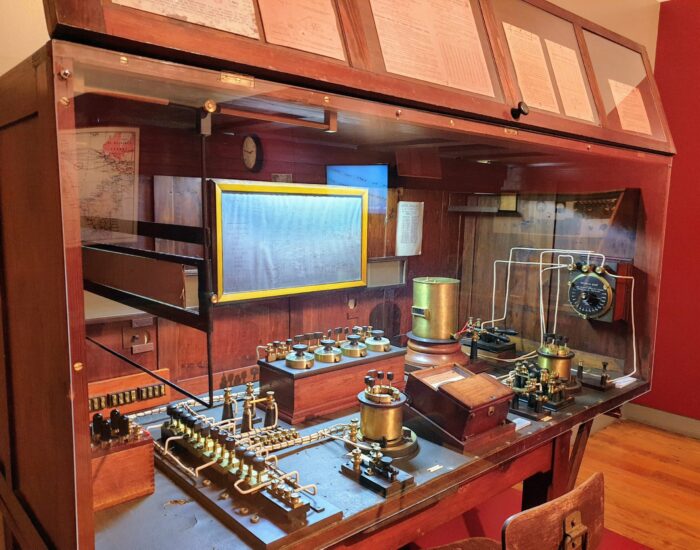
Submarine Cables
Between 1893 and 1969, several telegraph companies, mainly English, German, and American established headquarters in Faial. The continued presence of these foreign communities whose facilities were concentrated along Rua Cônsul Dabney, transformed the day-to-day life of the city, leaving a deep mark on the social, cultural, and sports life of the island.
©Foto Jovial
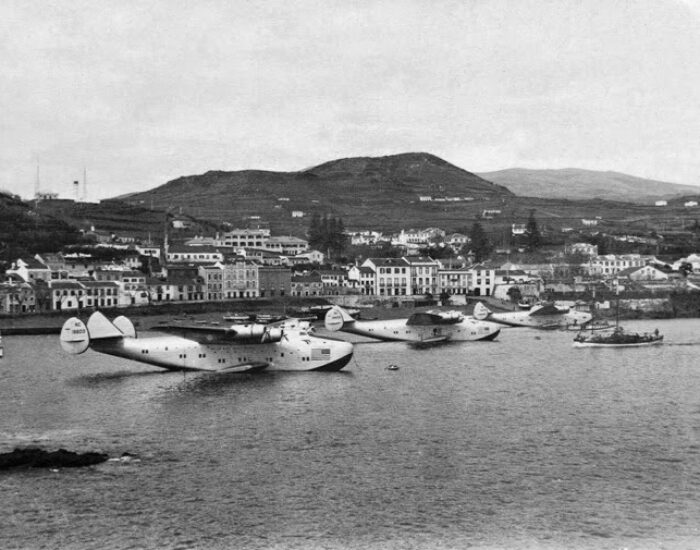
Aviation
The first half of the 20th century was also marked by historic moments in aviation. In 1919, the famous NC4 seaplane made a stopover at Horta’s harbor during the first North Atlantic air crossing, which connected the United States to Europe. Years later, seaplanes became a regular presence in the bay, where Pan Am’s Clippers made a stopover on the first commercial route between the old and new worlds.

Matriz and Conceição parishes
This area, which stretches from the city center, referenced by the monumental building of the Jesuit College, extends to the northern end of the city, where you can find Conceição beach and Vitorino Nemésio Park, an important landscaped area and a place for socializing and sports in the city of Horta.
We suggest a visit to Horta Museum, the ideal place to discover how the city and the island were transformed throughout the centuries. Begin with the Flemish settlements in the 15th century and end with the era marked by submarine cables and by transatlantic aviation in the 20th century.
Climbing up the hill, we can reach the Carmo Church, where there is an excellent view over the entire bay and city and visit the Horta Museum of Sacred Art.
From here you can visit gardens, squares, shopping streets, and the municipal market. On foot, the city reveals itself as a meeting place, where life pulses with a tranquility determined by the slow passage of time, characteristic of the Azorean islands.
Discover the main points of interest in this area:
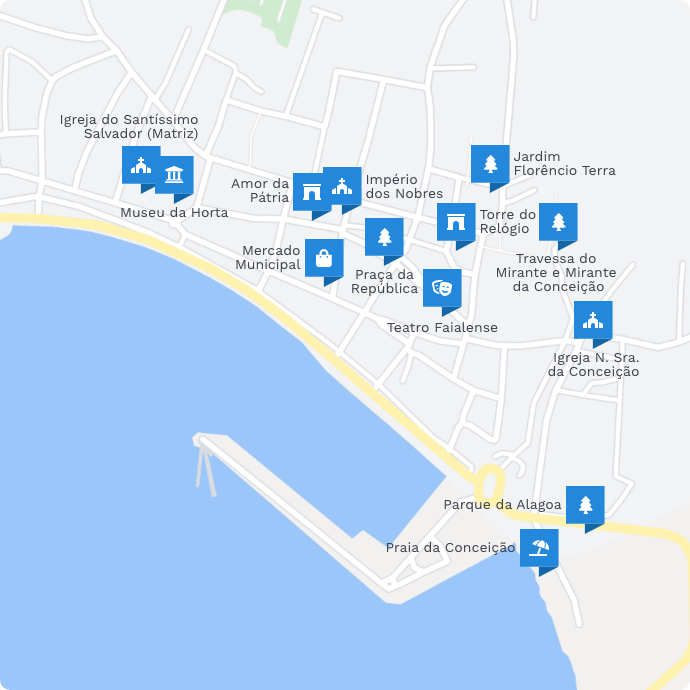
Horta’s Library
The library is located in the city center, has an adult and children sections, regional archive, exhibition gallery, auditorium and cultural gift shop.
The regional archive comprises a collection of old records and documents which may be useful to those wishing to learn more about their Azorean ancestors.
Igreja do Santíssimo Salvador (Matriz)
Part of the old Jesuit College, the Santíssimo Salvador is one of the largest churches in the Azores. This baroque style church is a good example of Portuguese religious art of the 18th century. The Horta Museum is housed in the same structure next to the Church.
Horta Museum
The Horta Museum is made up of a heterogeneous group of collections, which cover a chronological period from the 16th century to the present day: ethnography; technological objects related to the history of the Horta’s harbor and the submarine cable stations which operated in this North Atlantic communications center between the 19th and 20th centuries; sacred art; visual arts; photographic documents; printed and manuscript documents; natural history specimens.
Also noteworthy is the permanent collection of ethnographical works of Euclides Rosa in fig tree kernel, a unique collection which has been part of the museum since 1980.
Carmo Church
Nossa Senhora do Carmo Church is another of Horta’s great temples. It opened to the public in the late 18th century and embodies the strong connection of the Azores with Brazil.
The gilded carving, tiles and sculptures are of special interest in this church, however, its claim to fame is the largest non-supported stone arch in the country, a fascinating work of architecture and the skill of the builders of the time. It currently houses the Horta’s Museum of Sacred Art.
©Museu de Arte Sacra do Faial
Sacred Art Museum
Housed in the Nossa Senhora do Carmo church, this exhibition space displays sacred art pieces from the Azores Islands, more specifically the religious heritage of the island of Faial. The museum’s permanent collection includes pieces of Angra’s Diocese, the Third Order of Carmo, the Third Order of St. Francis and also the Church of Santíssimo Salvador, many of them coming from the extinct Museum of Sacred Art and Religious Ethnography of Horta.
Sociedade Amor da Pátria building
This unique building in Art Deco style was designed by Joaquim Norte Júnior, a prominent Portuguese architect and built in 1934 by the masonic society Amor da Pátria associated to the Grande Oriente Lusitano. Amor da Pátria was, for decades, one of the main venues of the city of Horta for hosting exhibitions, theater plays, concerts, balls, congresses, dinners and many other artistic, cultural and social activities.
Império dos Nobres
A temple built in the eighteenth century, in memory of a time of distress for the people of the island during the 1672 volcanic eruption in the parishes of Praia do Norte and Capelo. This worship temple to the Holy Spirit is one of the oldest empires built in stone and lime of the Azores, with baroque style elements.
Praça da República
Praça da República is a pleasant romantic garden cherished by the people of Faial. Its central location in close proximity to the Municipal Market, the Faialense Theatre, Amor da Pátria building and the various shops make Praça da Républica a thoroughfare for conviviality, harmony and contemplation. The pond with swans, the red and white wood and cast iron gazebo, the classic garden benches and the large araucarias give it character and create a welcoming atmosphere.
Municipal Market
This is a friendly market where you can find crafts, local and regional agricultural products, as well as cafes and restaurants ready to share the Azorean flavors. It is an important meeting point for the whole community, especially on Saturday mornings, when more producers set up to sell their products.
©Rê Schermann
Teatro Faialense (Theatre)
Teatro Faialense (theatre) is the main performance venue on the island and has a regular program of cinema, theater, dance and music. Although it is not strictly art deco, it displays the eclectic architectural trends of the early twentieth century. Its elegant facade, covered with ochre-yellow tiles, leads to a hall of classic beauty, harmonious, with several levels of boxes and a beautiful contemporary ceiling, painted by the Santa Maria artist José Nuno da Câmara Pereira.
Clock Tower
The Clock Tower is one of the most emblematic architectural landmarks of the city. It was built between 1700 and 1720 next to the southern facade of the old main church which was later destroyed by lightning. The clock mechanism of this unique public clock dates back to 1747.
Florêncio Terra Garden
This pleasant public garden is located in the higher part of the city in front of the Department of Oceanography and Fisheries of the University of the Azores. The garden is marked by its traditional red wood gazebo and the centennial dragon trees that ornament the space.
Travessa do Mirante
Upon leaving the Florêncio Terra Garden, take Travessa do Mirante and head towards the church of Conceição. This old cobblestone road, typical of the original streets of Horta, passes by a belvedere over Ribeira da Conceição and is a curious trip back in time!
Nossa Senhora da Conceição Church
The original temple was built in the early years of the island’s settlement and dedicated to Our Lady of Conception. Over the centuries, it was destroyed several times, either by pirate attacks or by earthquakes. The dates inscribed on the current facade testify to an actual chronicle of successive destructions and reconstructions. The current art deco style construction resulted from the destruction of the 1926 earthquake.
Parque da Alagoa
This extensive leisure park, located at the edge of the city of Horta, near Conceição beach is a pleasant and interesting place for many activities. From those looking for a quiet place to have a picnic in the city to those who want to exercise in a natural and wooded area, everyone will find reasons to visit the Alagoa park. If you are traveling with family, know that children love the playground area and its giant ship.
Conceição Beach
Located next to the Alagoa park, it has stationary sun umbrellas and free sun loungers during the bathing season. With the channel and the island of Pico as a backdrop, it is a sought after beach for surfing and bodyboarding when the swell is stronger.
Regional food, local products, services and nightlife
The city has the widest range of restaurants with regional cuisine, stores with local products, services and nightlife of the island.
Navigate the map and discover them:




